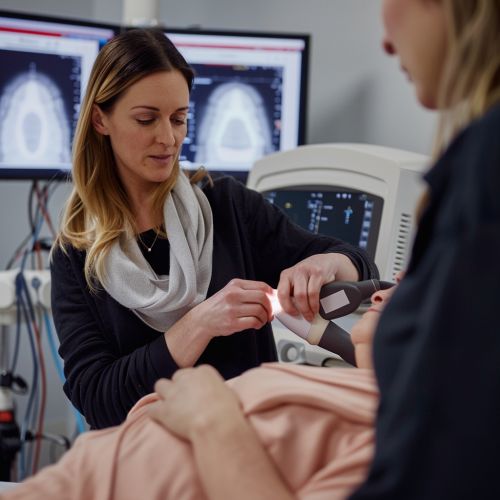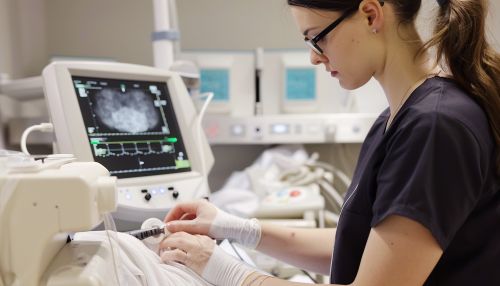Medical Sonography
Introduction
Medical sonography, also known as ultrasound imaging or echography, is a diagnostic imaging technique based on the application of ultrasound. It is used to visualize internal body structures such as tendons, muscles, joints, vessels, and internal organs for possible pathology or lesions. The practice of examining pregnant women using ultrasound is called obstetric ultrasound, and is widely used.


History
The development of medical sonography began in the late 1940s. The first ultrasound machines were large and cumbersome. They produced images of poor resolution and required considerable skill and experience to interpret. The technology was first used in clinical medicine around the 1950s and has evolved significantly since then. Today, ultrasound machines are compact, portable and produce high-resolution images, making them an indispensable tool in modern medicine.
Principles of Operation
Medical sonography works by emitting a beam of high-frequency sound waves (ultrasound) into the body. When these sound waves encounter different tissues, they are reflected back to the transducer. The time it takes for the echo to travel back to the probe is measured and used to calculate the depth of the tissue interface causing the echo. The greater the difference in acoustic impedance (density x speed of sound) between tissues, the larger the echo is.
Types of Sonography
There are several types of medical sonography, each with its own specific uses and advantages.
Abdominal Sonography
Abdominal sonography is used to examine the organs and structures within the abdomen, including the liver, gallbladder, spleen, pancreas, kidneys, bladder, and abdominal aorta.
Obstetric and Gynecologic Sonography
Obstetric sonography is used to monitor the health and development of an embryo or fetus within the mother's uterus. Gynecologic sonography examines the female reproductive system, including the uterus, ovaries, and cervix.
Echocardiography
Echocardiography is used to view the heart, heart valves, the great vessels, and the pericardium. Echocardiography can be conducted via the transthoracic or the transesophageal approach.
Vascular Sonography
Vascular sonography is used to evaluate blood flow in the body's major arteries and veins in the arms, legs, and neck.
Musculoskeletal Sonography
Musculoskeletal ultrasound is used to evaluate muscles, joints, tendons, ligaments, and soft tissue throughout the body.
Equipment
The primary component of a sonography machine is the transducer probe. This probe is responsible for both emitting the ultrasound waves and receiving the echoes. The transducer probe generates and receives sound waves using a principle called the piezoelectric effect, which causes materials to generate an electrical potential in response to applied mechanical stress.
Procedure
During a sonography examination, the sonographer or radiologist applies a water-based gel to the area of the patient's body being examined. The gel helps the transducer make secure contact with the body and eliminates air pockets between the transducer and the skin. The sonographer then presses the transducer firmly against the skin and sweeps it back and forth to image the area of interest.
Safety and Risks
Medical sonography is generally considered safe with no known risks if used as directed. Unlike X-rays, ionizing irradiation is not present in ultrasound, making it safe to scan pregnant women and children.
Careers in Sonography
A career in sonography requires specialized education and skills. The main role of a sonographer is to acquire images of patients' internal structures using ultrasound machines and to interpret the resulting images. They work closely with radiologists, physicians who are trained to interpret ultrasound images.
